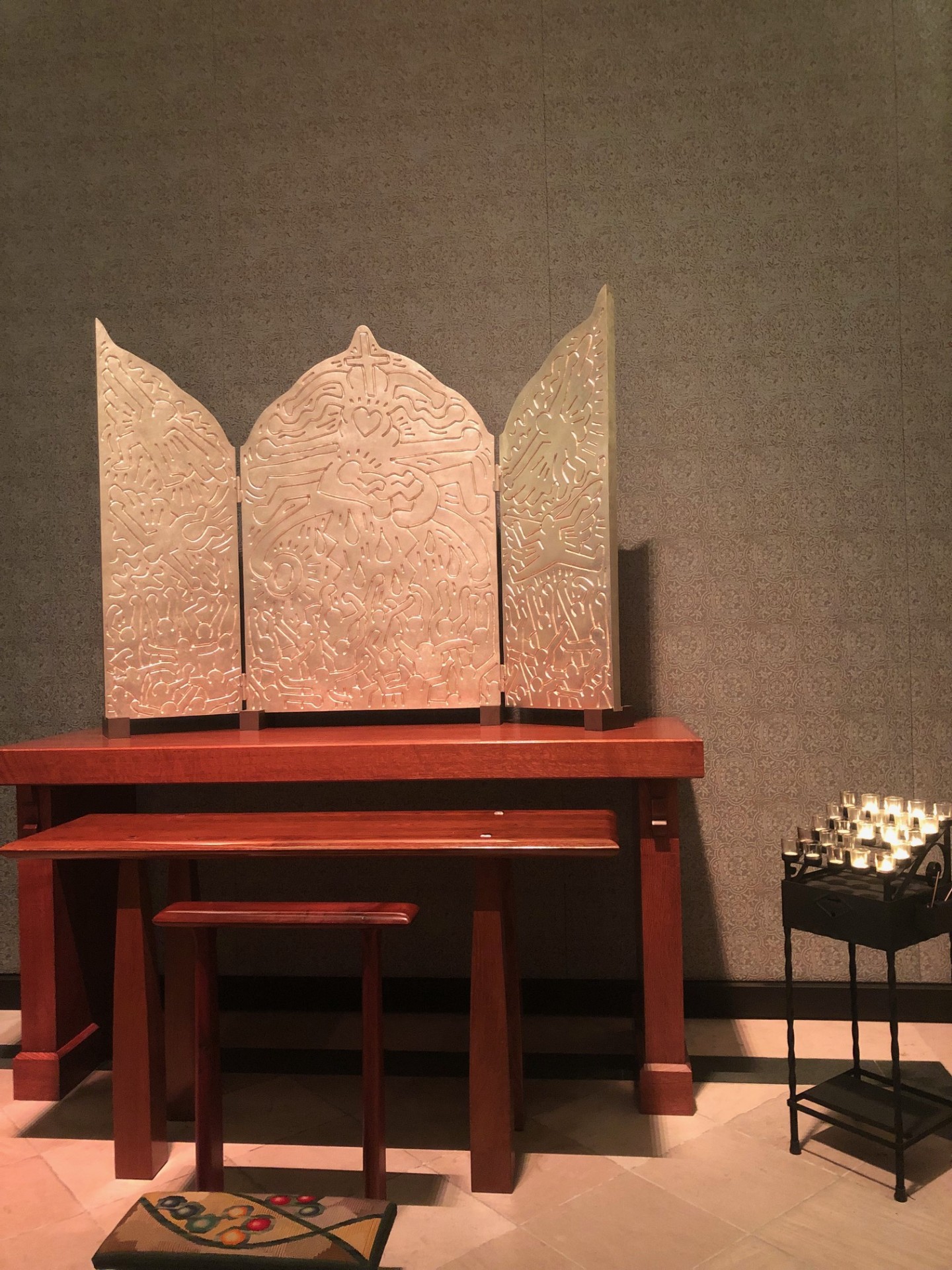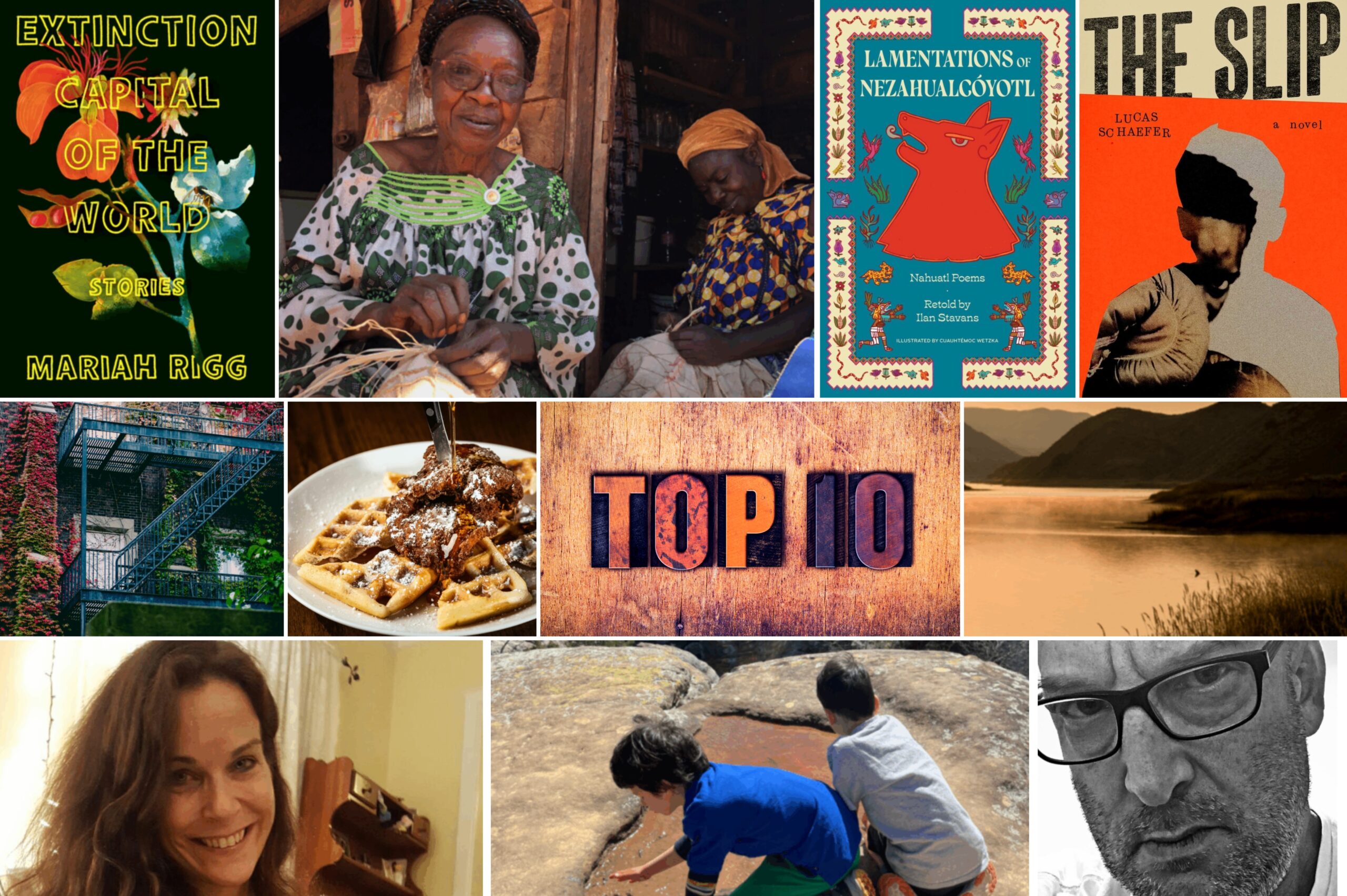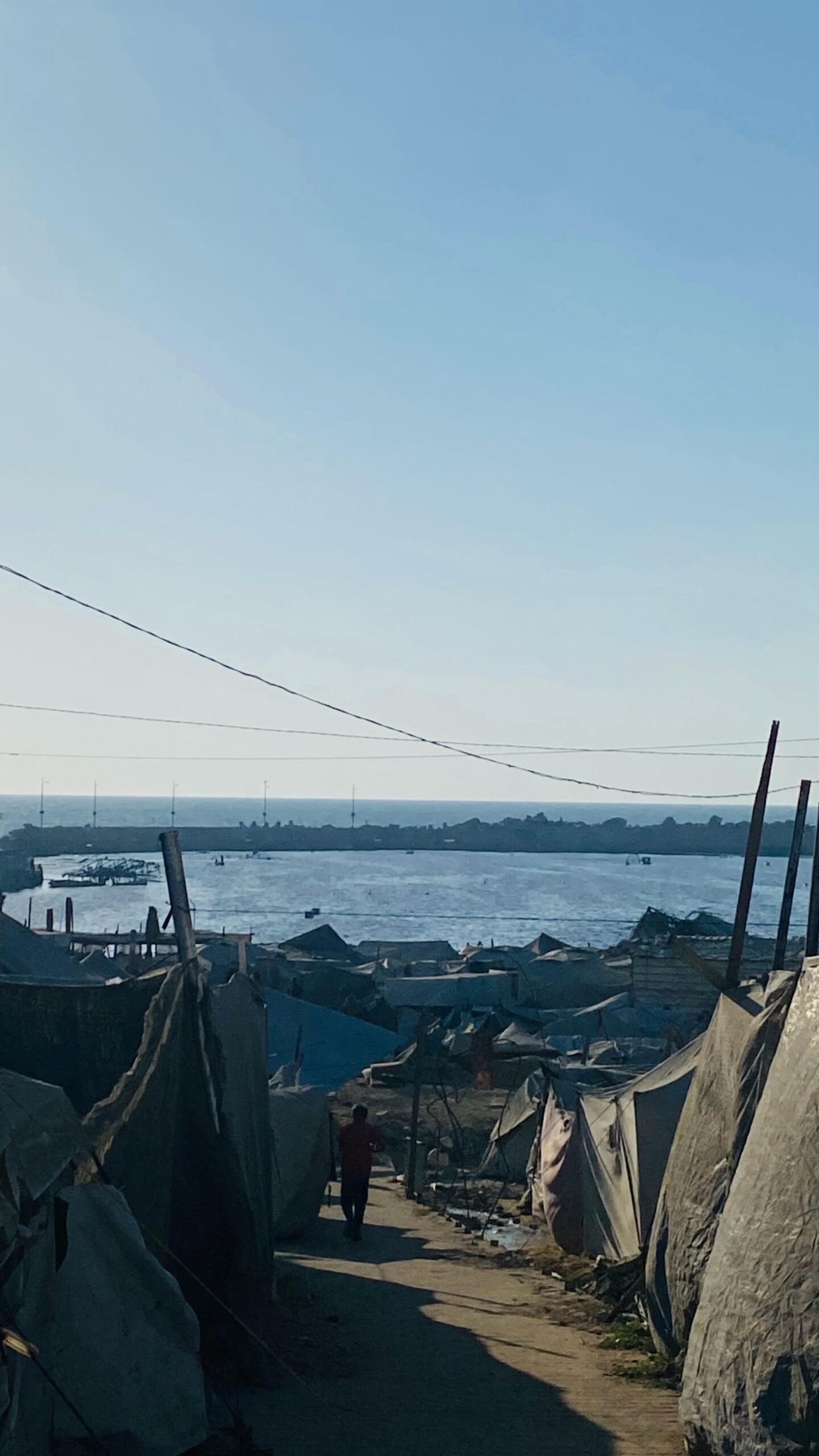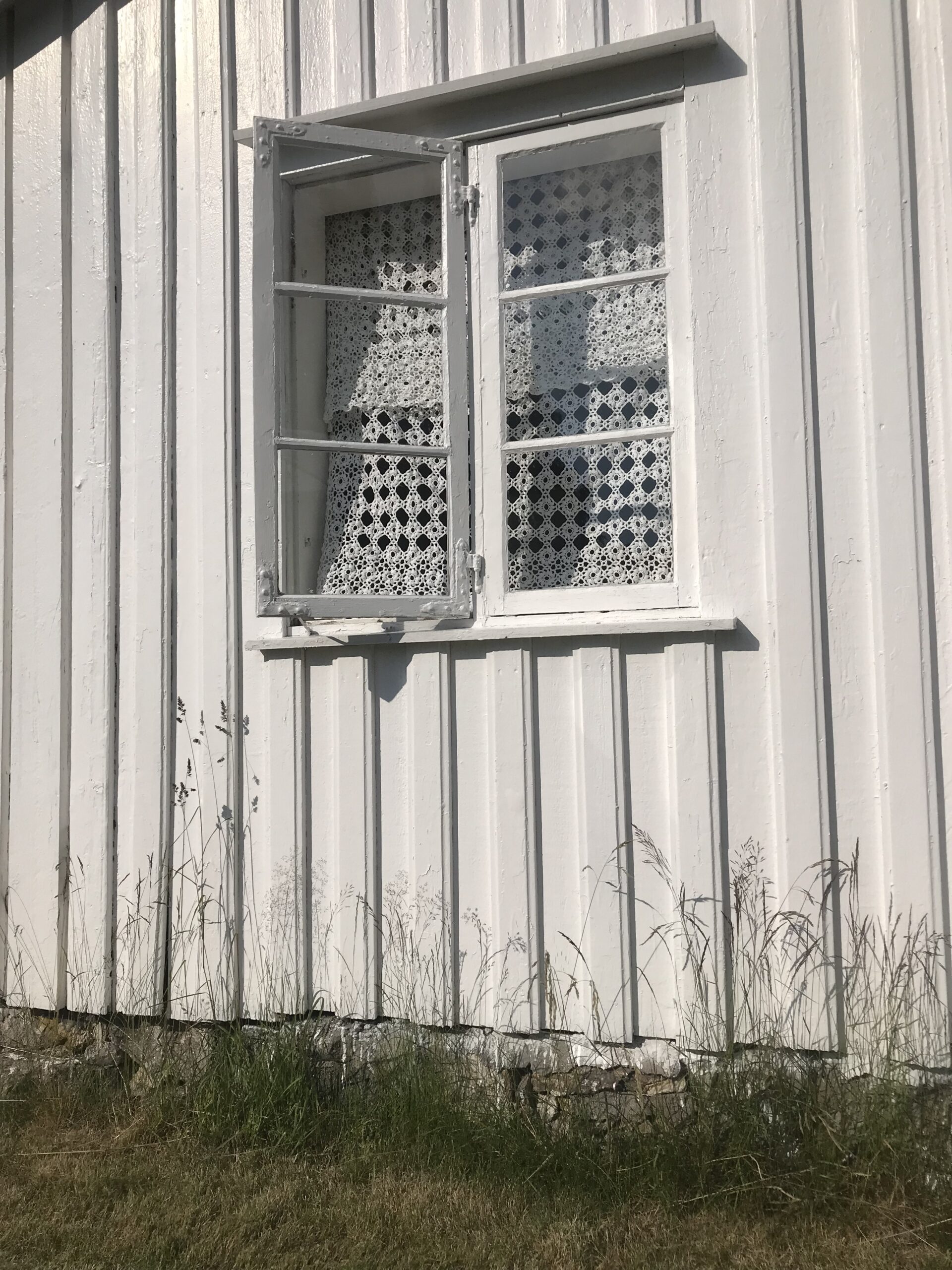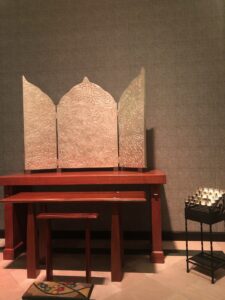
Photo courtesy of author.
San Francisco, CA
Gold is all you notice at first. A triptych dressed in shiny monochrome. The center of it is just above eyesight, so you’re left looking up at of Keith Haring’s altar, Life of Christ, an imposing piece, big enough to hold most of your gaze and envelop your mind. Haring made the original cast in 1990 and it’s considered his final work. Grace Cathedral in San Francisco acquired this edition in 1995 for its Interfaith AIDS Memorial Chapel.
Grace Cathedral is an imposing, Gothic-styled church presiding over Nob Hill. Even though I call San Francisco home, I sauntered in after Sunday mass like a tourist, and made my way to the chapel, a corner carved out of the back of the church. I started visiting this chapel after my Uncle Barry died. Barry wasn’t my blood uncle, but I only knew him as Uncle Barry, our babysitter, the artist, a gay man. Growing up queer myself, Uncle Barry was more my uncle than my mom’s brother—straight, conservative, 2,000 miles away—queerness lending itself to question family ties.
My Uncle Barry told me once that a university hospital wanted him to join a study of gay men who were exposed to HIV but never contracted it. How had he survived the epidemic? I chalked it up to the vaguely mystical powers that surrounded him. He was a dog whisperer. He said watches stopped on his wrist. He was born on St. Patrick’s Day. These quirks were enough for my sister and me to believe he was a leprechaun.
Since I was a kid, I’d known about Uncle Barry’s time in New York City. I’d heard the name John Paul. But it wasn’t until I was older and had read Randy Shilts’ And the Band Played On that I realized what it meant that John Paul had died from AIDS, just as Shilts had, and Haring had, and so many others.
I came to Haring’s altar not for a memory, but to chase a ghost. When Uncle Barry died, I inherited his stuff, where I found John Paul, a Greek American from Nebraska with kind eyes, in a photo, staring back at me. Ancestors, one generation removed, flung through the storm. I came for a man I never knew but who meant the world to a person I loved.
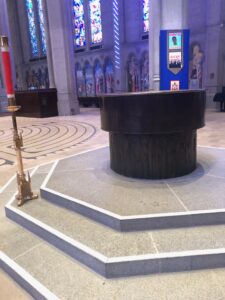
Photo courtesy of author.
The altar is cast in bronze but finished with gold leaf. It absorbs light and reflects it back with a glow. There’s no foreground or background to the piece. It’s not about depth, but energy, seeped in Haring’s characteristic style—outlined figures and expressive lines. At the top of the center panel is the Christ figure, a multiarmed body with a cross over its head. Drops fall from the body onto a crowd of outlined figures clamoring below, shouting, pleading. Angels circulate above, but they could be falling or rising or both, the duality of giving and taking, of life and death.
As Keith Haring’s friend Sam Havadtoy, who was present at the altar’s creation, remembers: “When Keith finished, as he stepped back and gazed at this work, he said, ‘Man, this is really heavy.’ When he stopped, he was exhausted, and it was the first time I realized how frail he had become. He was completely out of breath. He said, ‘When I’m working, I’m fine, but as soon as I stop, it hits me.’” Haring would pass away from complications from AIDS a few weeks later.
How do we deal with heaviness? It’s the gesticulating crowd that holds my attention. The sum of their frenetic energy, captured by a plethora of lines, almost frantic, all packed together from the left-most edge to the right. They demand your gaze. There are so many figures in the crowd, there were so many who lost their lives, and so many more who lost their friends, lovers, siblings, coworkers. I feel my own tears grow thinking about the sheer volume of loss.
#
There are donation stands in the room with rows of votives on them. I count eleven flames before stepping back to take a seat on the bench. Eleven souls remembered so far this morning. I realize I am no longer alone. A woman hovers over the stand. The chapel is small, and I feel self-conscious in the presence of her intimate moment. I look down at my cusped hands. Through the corner of my eye, I see she’s moved to the other side of the triptych. She spends a second there and then leaves. When I look up, I notice there’s a new light. Another soul remembered. Then, no, I see another, there’s two. How many light just one candle? If you lost one friend to AIDS, one loved one, would it be rare if there weren’t more?
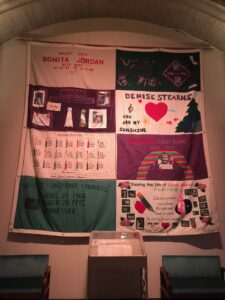
Photo courtesy of author.
An organ bellows and fills the entire cathedral with a thick presence. It’s a familiar and uplifting tune, but I can’t quite put my finger on the name of it. I don’t attend mass. I only know the Christmas standards. But the sound is pleasant, and I don’t mind it. I look at my watch and realize the fifteen minutes I thought I’d spend had turned into an hour. As I walk out, I pass the baptismal font and peer in at the copper basin. I was baptized here in 1989, the year John Paul died, the year that AIDS cases in the United States surpassed 100,000. I don’t know if Uncle Barry was there at my baptism, if he had returned to San Francisco by then or if he was still trying to make sense of his life after John Paul’s death. At the height of an epidemic, how many others had to attend baptisms after a funeral?
I take one last look at the chapel, at Haring’s altar. Two women have just entered. It’s around 1:00 p.m. on a Sunday and if they look closely, they’ll see fourteen candles lit.
Lily Lucas Hodges (they/all) is a historian who’s written at the intersection of queerness and Catholicism for The Washington Post, TIME, and elsewhere. This is their first published piece of creative nonfiction. They are currently finishing a memoir on their gay uncles that questions LGBTQ+ generational archives.
